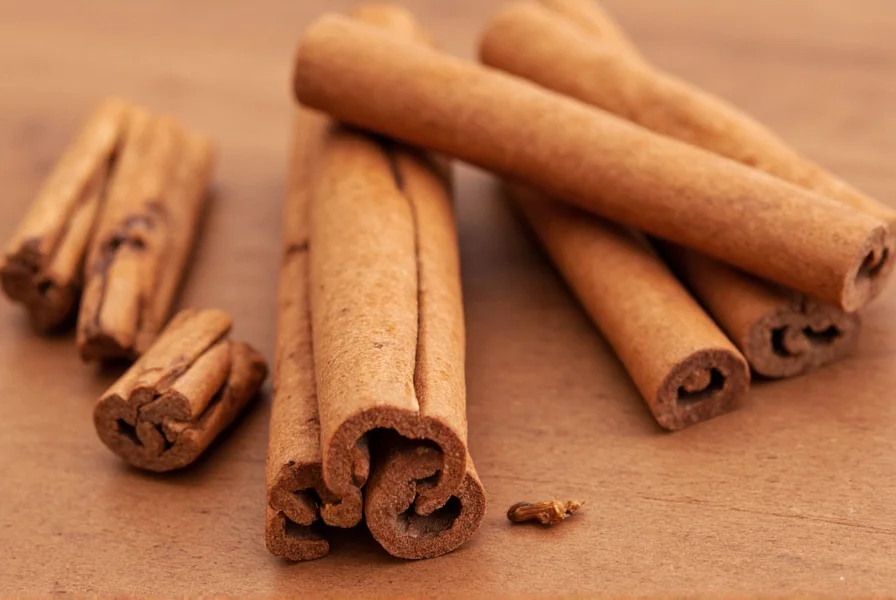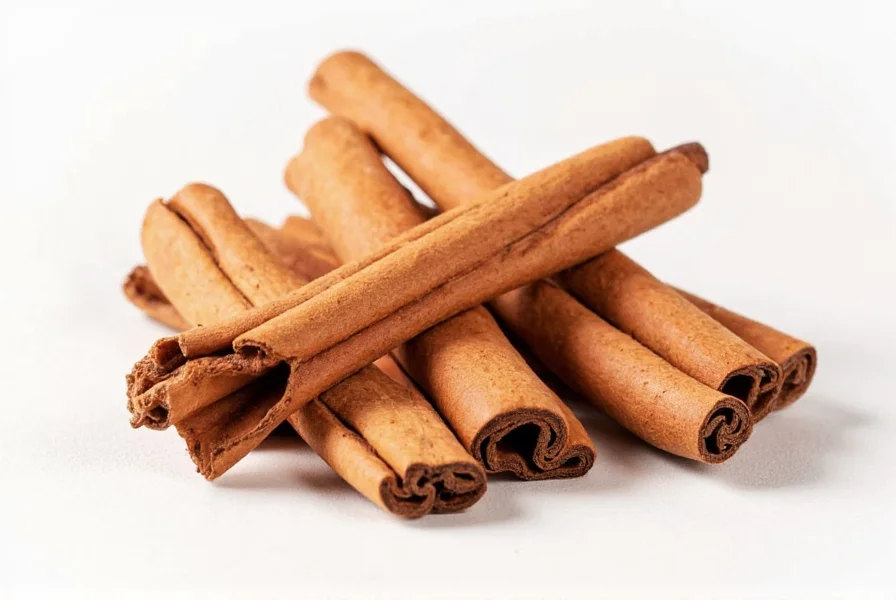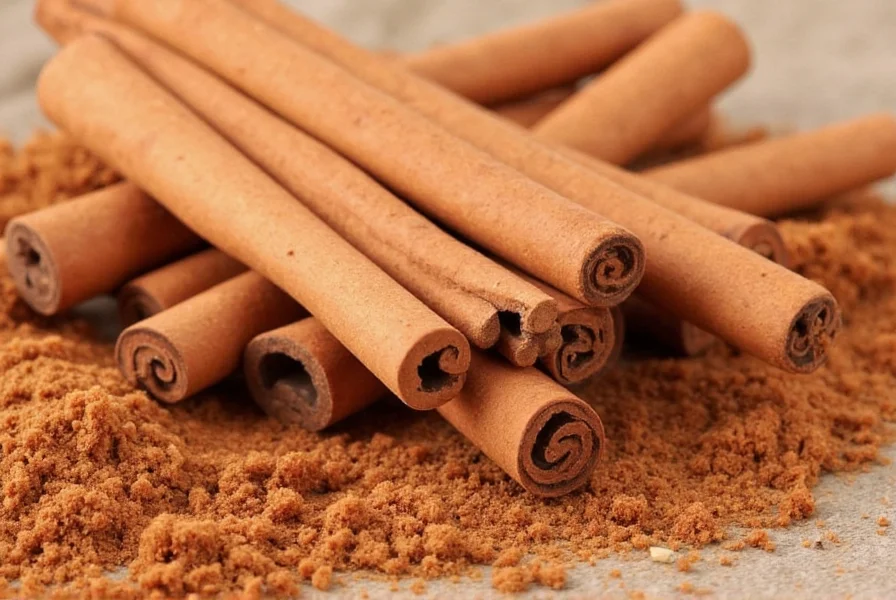Cinnamon has been treasured for thousands of years, not only as a flavorful spice but also for its potential health-promoting properties. This aromatic bark comes from trees primarily grown in Sri Lanka, China, and Indonesia, with Ceylon and Cassia being the most commercially available varieties worldwide. Understanding the differences between these types is crucial for both culinary excellence and health-conscious consumption.
Understanding Cinnamon Varieties
Not all cinnamon is created equal. The market offers several distinct types, each with unique characteristics:
| Type | Origin | Flavor Profile | Coumarin Content | Common Uses |
|---|---|---|---|---|
| Ceylon Cinnamon | Sri Lanka | Mild, sweet, complex | Very low | Delicate desserts, beverages, health-focused applications |
| Cassia Cinnamon | China, Indonesia | Strong, spicy, pungent | High | Baking, robust dishes, commercial food production |
| Saigon Cinnamon | Vietnam | Intensely spicy, sweet | Very high | Specialty baking, flavor extraction |
Nutritional Profile and Health Benefits
Cinnamon contains numerous bioactive compounds, with cinnamaldehyde being the primary component responsible for its distinctive flavor and aroma. Research suggests several potential health benefits associated with moderate cinnamon consumption:
Studies published in the Journal of Diabetes Science and Technology indicate that cinnamon may help improve insulin sensitivity and lower blood sugar levels, making it potentially beneficial for people with type 2 diabetes. The spice's anti-inflammatory properties, attributed to polyphenols and other antioxidants, may contribute to reduced oxidative stress in the body.
When exploring health benefits of Ceylon cinnamon versus Cassia, it's important to note that while both varieties offer similar antioxidant properties, Ceylon contains significantly lower levels of coumarin—a compound that can cause liver damage in high doses. This makes Ceylon the preferred choice for regular consumption, especially for those with liver conditions or taking medications metabolized by the liver.

Culinary Applications and Pairing Suggestions
Cinnamon's versatility in the kitchen spans both sweet and savory applications. Professional chefs often distinguish between when to use Ceylon cinnamon versus Cassia cinnamon based on the desired flavor profile and dish requirements.
For delicate desserts, beverages, and dishes where subtle spice notes are preferred, Ceylon cinnamon works best. Its lighter flavor won't overpower other ingredients. Cassia, with its stronger, more robust profile, excels in recipes requiring bold spice presence like cinnamon rolls, apple pie, and certain ethnic dishes from Middle Eastern and Asian cuisines.
When incorporating cinnamon into your cooking, consider these pairing suggestions:
- Fruit dishes: Apples, pears, and stone fruits complement cinnamon's warmth
- Dairy pairings: Works beautifully with milk, cream, and yogurt in both sweet and savory applications
- Spice combinations: Pairs well with cardamom, nutmeg, and cloves in baking
- Savory applications: Enhances Moroccan tagines, Indian curries, and Middle Eastern rice dishes
Selecting and Storing Cinnamon Properly
Knowing how to identify authentic Ceylon cinnamon can significantly impact both flavor and health considerations. True Ceylon cinnamon appears as multiple thin, papery layers that form a delicate scroll, while Cassia consists of a single, thick, hard roll of bark.
For optimal freshness and potency:
- Buy whole cinnamon sticks when possible—they retain flavor longer than ground spice
- Store in airtight containers away from light and heat
- Ground cinnamon maintains peak quality for 6-12 months, while sticks can last 2-3 years
- Perform the "sniff test"—fresh cinnamon should have a strong, sweet aroma
Safety Considerations and Recommended Intake
While cinnamon offers potential health benefits, understanding safe daily consumption limits for cinnamon is essential, particularly with Cassia varieties. The European Food Safety Authority recommends limiting coumarin intake to 0.1 mg per kg of body weight daily.
For an average adult, this translates to approximately:
- Cassia cinnamon: No more than 1 teaspoon (2-3 grams) daily
- Ceylon cinnamon: Up to 1-2 tablespoons (6-12 grams) daily due to minimal coumarin content
Individuals with liver conditions, pregnant women, and those taking certain medications should consult healthcare providers before consuming cinnamon in therapeutic amounts. When researching potential side effects of excessive cinnamon consumption, studies indicate possible issues including mouth sores, lowered blood sugar to dangerous levels, and liver toxicity with prolonged high intake of Cassia varieties.

Practical Usage Tips for Home Cooks
Maximize cinnamon's flavor potential with these evidence-based techniques:
For baking applications, blooming ground cinnamon in a small amount of warm liquid (like milk or coffee) before incorporating into batters releases more flavor compounds. When making cinnamon-infused syrups or extracts, gently heating the spice with the liquid (without boiling) optimizes extraction of aromatic compounds.
Understanding how cinnamon interacts with other ingredients can elevate your culinary creations. The spice's flavor compounds bind well with fats, making it particularly effective in butter-based sauces and cream preparations. In savory applications, adding cinnamon early in the cooking process allows its flavors to mellow and integrate, while adding it later preserves more of its distinctive aroma.
Conclusion
Cinnamon's enduring popularity stems from its remarkable versatility, distinctive flavor, and potential health benefits. By understanding the differences between Ceylon and Cassia varieties, consumers can make informed choices that balance culinary excellence with health considerations. Whether you're exploring therapeutic uses of cinnamon for blood sugar management or simply enhancing your favorite recipes, selecting the appropriate cinnamon type and using it properly will yield the best results for both flavor and wellness.
What's the main difference between Ceylon and Cassia cinnamon?
Ceylon cinnamon (true cinnamon) has a delicate, sweet flavor with multiple thin bark layers, while Cassia cinnamon is stronger, spicier, and comes from a single thick bark layer. Crucially, Ceylon contains significantly less coumarin, making it safer for regular consumption.
How much cinnamon is safe to consume daily?
For Cassia cinnamon, limit to 1 teaspoon (2-3 grams) daily due to high coumarin content. Ceylon cinnamon is safer for regular consumption, with up to 1-2 tablespoons (6-12 grams) generally considered safe. Those with liver conditions should consult a healthcare provider.
Can cinnamon help with blood sugar control?
Research suggests cinnamon may improve insulin sensitivity and help lower blood sugar levels, particularly for people with type 2 diabetes. However, it should complement—not replace—standard diabetes management approaches under medical supervision.
How can I tell if I have Ceylon or Cassia cinnamon?
Ceylon cinnamon forms delicate, multi-layered scrolls that are soft and brittle, while Cassia is a single, thick, hard roll of bark. Ceylon has a lighter brown color and sweeter aroma. If your cinnamon is very strong and pungent, it's likely Cassia.
Does cinnamon lose potency when cooked?
Cinnamon's flavor compounds are relatively stable during cooking. For maximum flavor release, bloom ground cinnamon in warm liquid before use. In savory dishes, adding cinnamon early allows flavors to mellow, while adding it later preserves more of its distinctive aroma.
Frequently Asked Questions
What's the main difference between Ceylon and Cassia cinnamon?
Ceylon cinnamon (true cinnamon) has a delicate, sweet flavor with multiple thin bark layers, while Cassia cinnamon is stronger, spicier, and comes from a single thick bark layer. Crucially, Ceylon contains significantly less coumarin, making it safer for regular consumption.
How much cinnamon is safe to consume daily?
For Cassia cinnamon, limit to 1 teaspoon (2-3 grams) daily due to high coumarin content. Ceylon cinnamon is safer for regular consumption, with up to 1-2 tablespoons (6-12 grams) generally considered safe. Those with liver conditions should consult a healthcare provider.
Can cinnamon help with blood sugar control?
Research suggests cinnamon may improve insulin sensitivity and help lower blood sugar levels, particularly for people with type 2 diabetes. However, it should complement—not replace—standard diabetes management approaches under medical supervision.
How can I tell if I have Ceylon or Cassia cinnamon?
Ceylon cinnamon forms delicate, multi-layered scrolls that are soft and brittle, while Cassia is a single, thick, hard roll of bark. Ceylon has a lighter brown color and sweeter aroma. If your cinnamon is very strong and pungent, it's likely Cassia.
Does cinnamon lose potency when cooked?
Cinnamon's flavor compounds are relatively stable during cooking. For maximum flavor release, bloom ground cinnamon in warm liquid before use. In savory dishes, adding cinnamon early allows flavors to mellow, while adding it later preserves more of its distinctive aroma.











 浙公网安备
33010002000092号
浙公网安备
33010002000092号 浙B2-20120091-4
浙B2-20120091-4